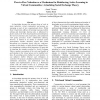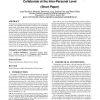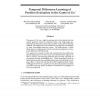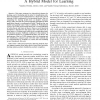1238 search results - page 124 / 248 » The Cascade-Correlation Learning Architecture |
HICSS
2000
IEEE
14 years 1 months ago
2000
IEEE
As knowledge becomes the primary focus of work in many industries, virtual communities and groups are emerging as part of new organizational forms. Within these virtual forms, eff...
ATAL
2008
Springer
13 years 11 months ago
2008
Springer
We discuss the design of the Intermediary Agent's brain, the control module of an embodied conversational virtual peer in a simulation game aimed at providing learning experi...
NIPS
1993
13 years 10 months ago
1993
The game of Go has a high branching factor that defeats the tree search approach used in computer chess, and long-range spatiotemporal interactions that make position evaluation e...
ICML
2010
IEEE
13 years 10 months ago
2010
IEEE
In Sparse Coding (SC), input vectors are reconstructed using a sparse linear combination of basis vectors. SC has become a popular method for extracting features from data. For a ...
TNN
1998
13 years 8 months ago
1998
— This paper proposes two hierarchical schemes for learning, one for clustering and the other for classification problems. Both schemes can be implemented on a fuzzy lattice neu...




